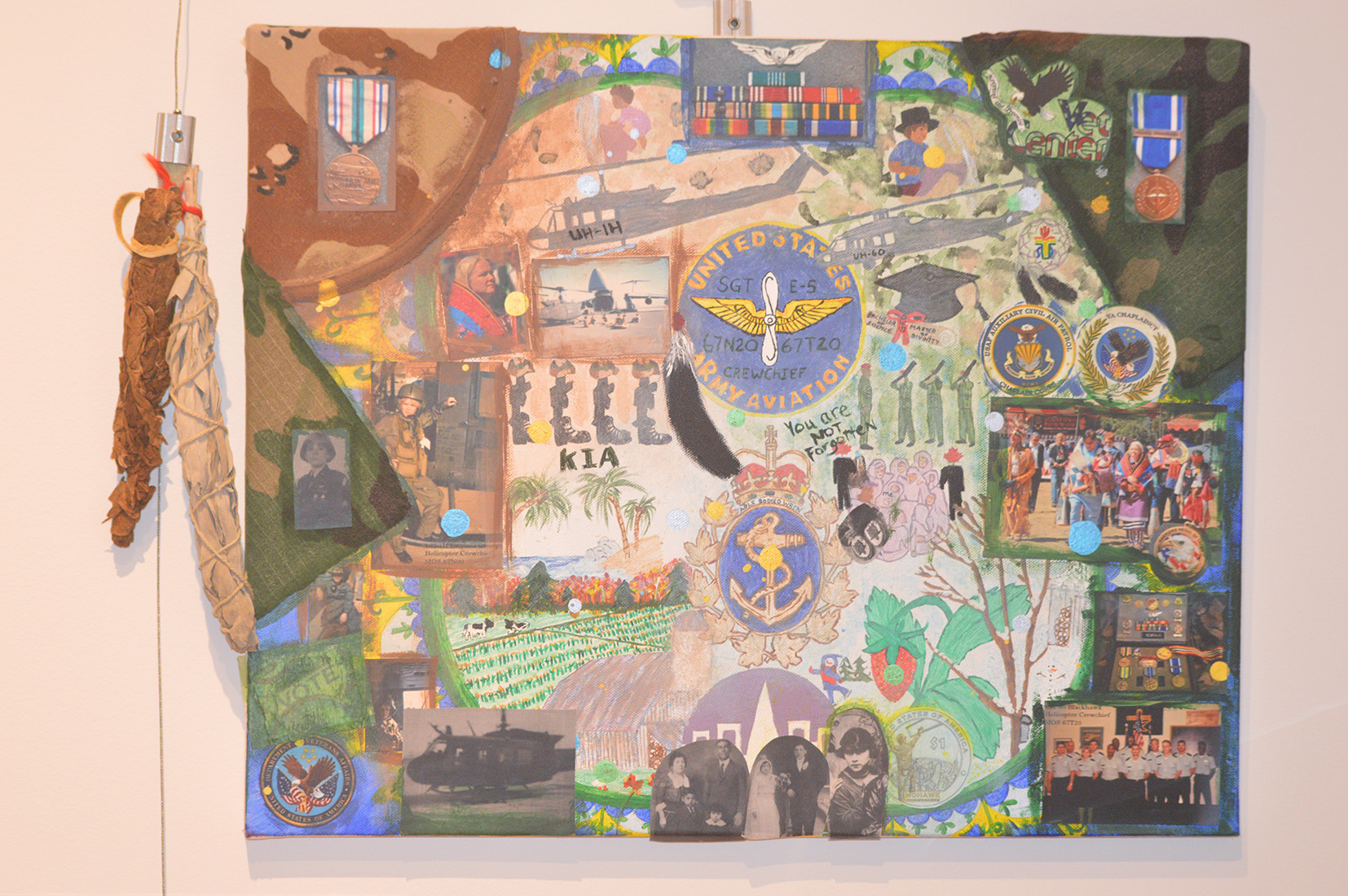By Kaylah Jackson
R.G. “Buz” Leland, who memorialized America’s female casualties of war as part of the Women of Courage Exhibit on Friday, said that everyone has a story to share.
“I hope that people would see this and think about that title and not only think of warriors, but there are women–people. We all have a story–get some compassion, that’s what I wanna yell,” said Leland, the artistic director of the exhibit’s memorial at the Ukrainian National Museum, where handcrafted work by female veterans was featured.
The exhibit includes mixed media art, paintings, sculptures, drawings, and self-portraits but the main component of the exhibit is ‘A Touching Tribute,’ an interactive exhibition featuring the names and faces of fallen military women.
“ It was originally conceived and designed to allow current military members, especially if they’re in a wheelchair, to touch and do rubbings of the dog tags,” said Jerry Kykisz, curator of the Women of Courage Exhibit. “The ultimate goal of the touching tribute is to do exhibits that honor all the casualties post 9/11 and this particular box is the women’s box.”

As of October 2016, there were over 2 million women veterans in the United States, and almost 20 percent of women veterans who were involved in conflicts in Iraq and Afghanistan were diagnosed with PTSD.
“All of the women that died since the 9/11 conflict began are represented here and they’re corresponding, so when the lid closes, their photograph connects with the name, a total of 166 names thus far and since women are more and more joining combat units, we left a little space for future applicants,” Kykisz said.
‘A Touching Tribute’ was the brainchild of Leland, 65. Leland’s background in pottery and his previous work on the Vietnam Veterans Memorial located along the Chicago riverwalk helped inspire him for the layout of this specific project.
Leland said: “It was kind of cathedral looking like the way the lines come together. You can touch, you can take a tracing and say ‘there’s my son or daughter,’ when you read it up, the face and the names match each other, when the lid closes there is still some light–it became real emotional.” .
Created by hand, over the course of about a month, the women’s portion of the memorial is part of a larger set of boxes that is designed to fit into the shape of a star and cover the space of a 150 square-foot room. Six boxes within the project hold 200 names and photos and the rest of the boxes hold 120 names; all of which are grouped by year. The single black tag in the box represents suicide awareness in the military.
Military Times has a database on its website that provided the names and photographs of individuals for the project and Leland sought out Logo Tags, a small business in New York City, which printed the tags. Coincidentally, Logo Tags invented the ball chain that is used by servicemembers who wear the dog tags.

Leland, who served alongside women and as a Navy diver for four years did not want the access of the memorial to be hindered for anyone.
“It does make it a little more meaningful that this is Women’s History month and these are women of courage,” Leland said. Many of the Navy women that I served with were experts in their field for sure. …I didn’t want to ever hear someone from a wheelchair not being able to have access.”
The ability to have a physical interaction with ‘A Touching Tribute’ models similar veteran memorials around the United States and offers the public an opportunity to share an intimate moment with the effects of war.

“When you look at the total exhibit, I would like people to be horrified in war…the overwhelmingness of it,” Leland said. “You look at it and you go ‘whoa.’ Maybe people will take away from it that there’s got to be a better way. …When you look at the photographs and say ‘wow, that could be my sister,’ ‘that was my girlfriend.’ Every sacrifice has a name and a face.”
For many veterans, like the women who submitted artwork for the museum and Leland, who worked on the Vietnam Veterans Memorial in the early ’90s and has used art as a type of calming therapy, creating pieces such as ‘A Touching Tribute,’ has helped him to be at peace.
“I knew that something had to help with the guilt, …Maybe it’s a brush stroke or the shape of a pot. …The only way to be at peace is to be at peace with everything, so touch, look and sight: those are the first ways that you can get there, that’s why I like it.”
Like Leland, and so many of the women who contributed to the Women of Courage Exhibit, it’s up to the newer generations of veterans to find an outlet for them to convey their stories and messages.
“There’s other guys out there like me, thinking like me, that’s kinda what I want for 9/11, the young guys to figure out, don’t wait until 20 years, start working on it now,” Leland said. “It did that to countless numbers of guys. It was like the museum saved us and maybe our new memorial will save some of [you] guys.”


